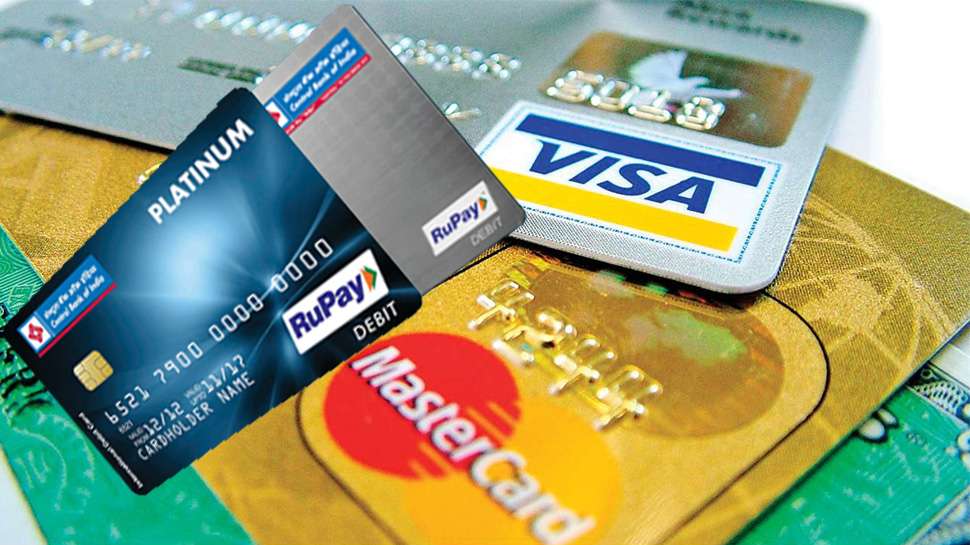Reuters reported a few days ago that Visa had filed a protest with the US authorities accusing India of giving its native payment network RuPay excessive favouritism. We also explain why Visa has ants in its trousers.
The Synopsis
Before we get started, here's a quick rundown of how credit card transactions operate.
Assume you go to the supermarket and purchase a package of biscuits. You don't have any money with you. So you opt to pay for it using your debit/credit card. When you swipe your card at a point-of-sale machine, a wonderful dance starts. In an effort to relocate money, your bank contacts the shop owner's bank. The merchant discount rate is a minor fee charged by the business owner's bank for being a willing participant. It can't, however, keep everything to itself. It must divide a portion of the profits with another middleman who assists in the payment process. Visa or Mastercard are the intermediaries in this case. And, since the business owner has gained from the sale, they must now pay the bank the merchant discount rate, which is normally about 1–3% of the transaction. As a result, payment networks such as Visa and Mastercard can prosper in an unpredictable society.
Remember that they get to retain a portion of the spoils as well?
However, as nations continue to develop their own payment network options, this duopoly is facing an existential challenge.
Take, for example, India. It created the Unified Payments Interface (UPI) in 2016 to make fast payments easier. Anyone could instantly transfer money from one bank account to another by scanning a Quick Response (QR) code. What's more, what's more impressive? It was completely free. Merchants adored it since they no longer had to pay the additional fee. Visa and Mastercard started to lose a lot of money in a high-growth country like India. According to some estimates, the total cost would be about Rs 6,000 crores.
The two expressed their disapproval right away. They appealed to the authorities, pleading with them to preserve their rights. Officials, on the other hand, didn't appear to mind.
"We are not in the process of preserving private players' earnings," a senior Niti Aayog official said. "The government will continue to give end-users with other and less expensive payment choices so that they may participate in our digital payment initiative."
Visa and Mastercard, for example, couldn't do anything since UPI isn't a card. It's a whole different experience. They do, however, have a direct competitor in India's RuPay, which they are now pursuing.
RuPay accounted for 15% of all credit and debit cards in the nation as of 2017. However, as of November 2020, the RuPay stamp was present on 63 percent of India's 952 million debit and credit cards.
You may be wondering how RuPay came to be so powerful.
A RuPay card is given to anybody who opens a bank account under India's financial inclusion plan, the Pradhan Mantri Jan-Dhan Yojana (PMJDY). In reality, this scheme is connected to over half of all RuPay cards. The remaining 50% is influenced by a few subtle and not-so-subtle government nudges. Consider Prime Minister Narendra Modi's use of the "nationalism" card, in which he encourages his fellow citizens to embrace local cards and contribute to nation-building. Or when Nirmala Sitharaman, the Finance Minister, orders banks to only issue RuPay cards.
Visa feels that this is an excellent example of the government favouring one brand over another. It's no longer an equal playing field, and they've expressed their dissatisfaction by submitting an official complaint with the US government. In 2018, Mastercard filed a similar case in the United States.
India isn't the only country promoting its own payment networks. Mir, a Russian credit card company founded in 2015, has a total monopoly on Visa and Mastercard. Even the European Union is developing the European Payments Initiative (EPI) to wean itself off of some of these ties.
As a result, Visa's outbursts should seem irrational, even infantile at this stage. After example, when domestic alternatives are available, governments will seek to promote them. Isn't it just logical for Indian officials to encourage citizens to use RuPay debit cards?
Visa, on the other hand, has an ace under its sleeve. It understands that whining isn't always a waste of time.
India has a trade surplus with the United States. That implies we export more products and services to the United States than they export back to their own country. On the surface, this seems to be a positive development for Indian firms and entrepreneurs. They have immediate access to a vital market in the United States, and they profit handsomely from it. Politicians in the United States, on the other hand, have often criticised India of not returning in kind. They claim that by imposing levies and tariffs, we restrict access to our market, making it more difficult for American firms to conduct business in India. And, if this issue strikes a nerve with US officials, they may respond forcefully, pushing India to reassess its stance.
So, although the complaint may be without validity, Visa is certain that it can persuade the US to intercede on its side. As a result, we'll have to wait and watch how the US responds.


Comments
Post a Comment